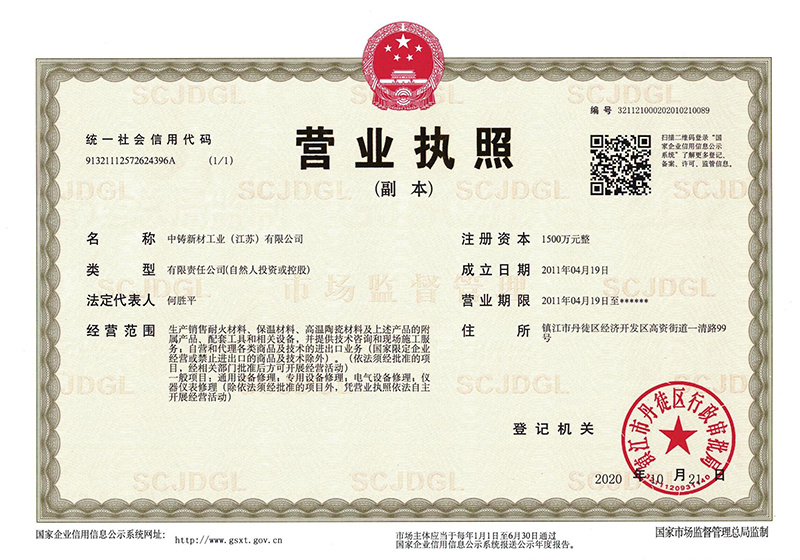News
SINO-FOUNDRY—professional refractory manufacturer
Unlocking the Potential of Alumina Silicate Mortars in Metallurgy: A Comprehensive Guide
2025-05-30
Unlocking the Potential of Alumina Silicate Mortars in Metallurgy Table of Contents 1. Introduction to Alumina Silicate Mortars 2. Properties of Alumina Silicate Mortars 3. Applications in Metallurgy 4. Advantages of Using Alumina Silicate Mortars 5. Comparison with Other Refractory Materials 6. Future Trends and Innovations 7. Common Challenges and Solutions 8. Frequently Asked Questions (FAQs) 9
Unlocking the Potential of Alumina Silicate Mortars in Metallurgy
Table of Contents
1. Introduction to Alumina Silicate Mortars
2. Properties of Alumina Silicate Mortars
3. Applications in Metallurgy
4. Advantages of Using Alumina Silicate Mortars
5. Comparison with Other Refractory Materials
6. Future Trends and Innovations
7. Common Challenges and Solutions
8. Frequently Asked Questions (FAQs)
9. Conclusion
1. Introduction to Alumina Silicate Mortars
Alumina silicate mortars are essential materials in the field of metallurgy, known for their remarkable thermal properties and versatility. These mortars are composed primarily of alumina (Al2O3) and silica (SiO2), which confer unique characteristics that make them suitable for high-temperature applications. As industries continue to seek materials that can withstand extreme conditions while maintaining structural integrity, the demand for alumina silicate mortars is on the rise.
2. Properties of Alumina Silicate Mortars
Alumina silicate mortars boast several key properties that make them invaluable in metallurgical applications:
2.1 High Temperature Resistance
One of the most significant features of alumina silicate mortars is their ability to withstand high temperatures. With melting points exceeding 1600°C, these materials are ideal for use in furnaces, kilns, and other high-temperature environments.
2.2 Chemical Stability
Alumina silicate mortars exhibit excellent resistance to chemical corrosion, making them suitable for environments that involve aggressive chemical interactions. This stability ensures longevity and reduced maintenance costs.
2.3 Low Thermal Conductivity
The low thermal conductivity of alumina silicate mortars helps in energy conservation within metallurgical processes. By minimizing heat loss, these materials contribute to more efficient energy use.
2.4 Mechanical Strength
These mortars possess remarkable mechanical strength, which is critical in supporting the structural integrity of high-temperature systems. Their ability to resist mechanical wear and stress makes them a preferred choice in demanding applications.
3. Applications in Metallurgy
The applications of alumina silicate mortars in metallurgy are vast and varied. These materials are primarily used in:
3.1 Furnace Linings
Alumina silicate mortars are widely used as linings for furnaces due to their high thermal resistance. They protect the structural components of the furnace from the intense heat and chemical reactions occurring within.
3.2 Refractory Castables
In the formulation of refractory castables, alumina silicate mortars play a crucial role. They enhance the durability and life span of castable refractories, which are vital for various metallurgical processes.
3.3 Repair and Maintenance
Alumina silicate mortars are also used for repairing and maintaining existing structures. Their compatibility with various substrates allows for effective patching and restoration of worn-out areas.
3.4 Chemical Process Equipment
In chemical processing equipment, these mortars help to create protective barriers, ensuring that equipment remains functional in harsh conditions.
4. Advantages of Using Alumina Silicate Mortars
The unique benefits of alumina silicate mortars further solidify their position in the metallurgy industry. Some of the key advantages include:
4.1 Cost-Effectiveness
Compared to other high-temperature materials, alumina silicate mortars offer a cost-effective solution without compromising on performance. Their longevity reduces the frequency of replacement, resulting in lower overall costs.
4.2 Versatility
These mortars can be formulated to meet specific requirements, allowing for tailored solutions in various metallurgical applications.
4.3 Environmentally Friendly
With a focus on sustainability, alumina silicate mortars are often produced using environmentally friendly processes, making them a responsible choice for modern industries.
4.4 Enhanced Safety
The use of alumina silicate mortars contributes to safer operational conditions, as they are less likely to degrade or fail under extreme conditions, minimizing the risk of accidents.
5. Comparison with Other Refractory Materials
When considering refractory materials for metallurgical applications, alumina silicate mortars can be compared to alternatives such as fireclay and high alumina refractories.
5.1 Fireclay Refractories
While fireclay refractories are cost-effective, they often lack the high-temperature capabilities of alumina silicate mortars. This limitation can lead to increased maintenance and replacement costs.
5.2 High Alumina Refractories
High alumina refractories provide superior thermal resistance but can be more expensive than alumina silicate mortars. The choice between these materials often depends on specific application requirements and budget constraints.
6. Future Trends and Innovations
The metallurgy industry is continuously evolving, and so are the materials used within it. Future trends in alumina silicate mortars may include:
6.1 Enhanced Formulations
Innovations in the formulation of alumina silicate mortars are likely to lead to improved properties, making them even more suitable for specialized applications.
6.2 Integration with Advanced Technologies
The integration of alumina silicate mortars with technologies such as smart sensors may optimize their performance, allowing for real-time monitoring and maintenance.
6.3 Sustainable Practices
As industries push for sustainability, the development of eco-friendly alumina silicate mortars will likely gain traction, reducing the environmental footprint of metallurgical processes.
7. Common Challenges and Solutions
While alumina silicate mortars offer many benefits, some challenges must be addressed:
7.1 Installation Difficulties
Proper installation is crucial for performance. Training and employing skilled professionals can mitigate these challenges and ensure optimal application.
7.2 Compatibility Issues
Compatibility with other materials can sometimes pose challenges. Thorough testing of mortar formulations against existing structures can prevent issues during application.
7.3 Temperature Fluctuations
Wide temperature fluctuations can cause thermal shock. Employing appropriate installation techniques and selecting mortars designed for specific temperature ranges can help alleviate this issue.
8. Frequently Asked Questions (FAQs)
8.1 What are alumina silicate mortars made of?
Alumina silicate mortars primarily consist of alumina (Al2O3) and silica (SiO2), combined to achieve desirable thermal and mechanical properties.
8.2 Where are alumina silicate mortars commonly used?
They are commonly used in furnace linings, refractory castables, and chemical process equipment due to their high-temperature resistance and durability.
8.3 How do alumina silicate mortars compare to other refractories?
Alumina silicate mortars offer a balance of cost and performance, making them a versatile choice compared to more expensive high alumina refractories and less durable fireclay refractories.
8.4 Can alumina silicate mortars be customized?
Yes, alumina silicate mortars can be formulated and customized to meet specific application requirements, enhancing their effectiveness in various environments.
8.5 What are the future developments expected in alumina silicate mortars?
Future developments may include enhanced formulations, integration with advanced technologies, and a focus on sustainable production practices.
9. Conclusion
Alumina silicate mortars represent a significant advancement in the field of metallurgy, providing exceptional thermal resistance, chemical stability, and mechanical strength. Their diverse applications and many advantages make them an indispensable material in high-temperature environments. As industries continue to evolve and seek innovative solutions, alumina silicate mortars are poised to play an increasingly vital role in shaping the future of metallurgy. Embracing these materials not only enhances operational efficiency but also contributes to sustainable practices, ensuring a smarter and safer industrial landscape.
Related News
2024-11-05
Zhongzhu New Materials Industry sincerely invites you to participate in the 24th International Forum and Exhibition on Recycled Metals.

WeChat public account

View mobile website
Address : No. 99, Yiqing Road, Gaozi Street, EconomicDevelopment Zone, Dantu District, Zhenjiang City
Fax : +86-511-85683066
E-mail : sales@sfr168.com
Website : https://www.sfr168.com
Copyright©2023 Sino-Foundry Refractory(Jiangsu) Co.,Ltd. Powered by:www.300.cn
Copyright©2023 Sino-Foundry Refractory(Jiangsu) Co.,Ltd.
IPV6 | SEO | Cloud Information



